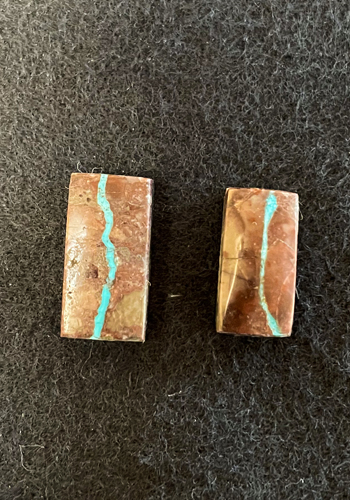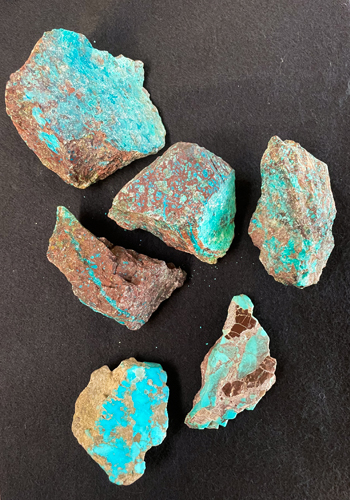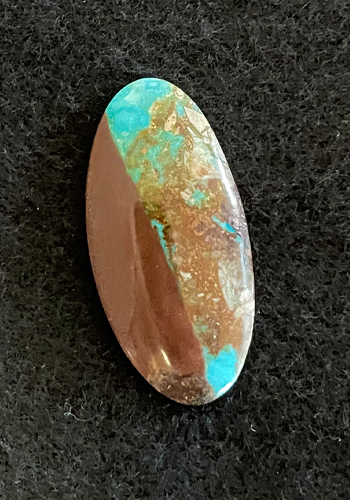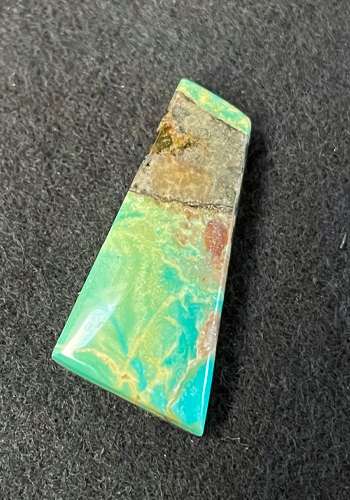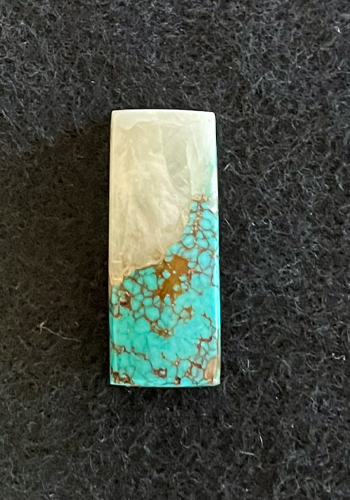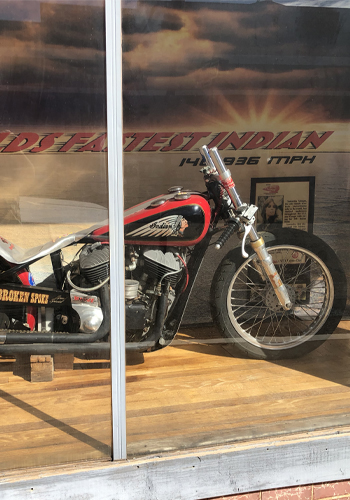
The History of Bisbee turquoise
The town of Bisbee and the namesake of one of the most coveted turquoise from the American southwest happened by quite accident in the late 1800’s. A U.S. Cavalry scout by the name of Jack Dunn who was sent to look for water while tracking Apache Indians in the Mule Mountains, found a spring along a limestone cliff on what is known today as Castle Rock in the heart of Bisbee. In the same area during his search for water and what is now known as tombstone canyon, he found an outcrop containing Cerussite (lead carbonate) which contains silver. He reported his findings to his superior Lt. John Rucker, and a packer by the name of Ted Byrne. The three of them called it the “Rucker” claim, but due to the pursuit of the Apaches and other unfortune misdeeds by a George Warren who they entrusted to file their claim it wasn’t until sometime later and under the name of George Warren did the area become the Warren mining district and ultimately what is now today the queen mine and Lavender pit.
Turquoise was not mined in Bisbee. The Bisbee “mine” (queen mine and adjacent Lavender pit) mostly produced copper ore and was owed and operated by Phelps Dodge (PD) from 1885 until 1985 when it ceased operations due to diminished returns. The Bisbee turquoise you see adorning beautiful Native American, southwestern and contemporary jewelry was mostly brought out of the mine against company policy hidden in lunch boxes and jacket pockets. Because of this, it is extremely rare. Couple the rarity with the mesmerizing beauty of “Bisbee blue” and this makes it highly coveted.

Lavender Pit, Bisbee 
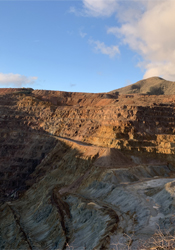
Back in the 70’s and 80’s the Lavender pit overlook was a visitor center with information and history about the mining operation. As a child I spent a lot of time in Bisbee and other Phelps Dodge mines and smelters as my father worked for PD as a metallurgist. I remember being so impressed by the massive boulders of Copper ore with vibrant streaks of Chrysocolla, Malecite and Azurite that lined the parking lot at the visitor center. I’m sure they had some Turquoise in them too. The abundance and quality of the minerals in the mine were on full display. The visitor center is now vacant, abandoned, a ghost of times forgotten and in disrepair.
Over the years I have gone with many friends and family members on the underground tour of the Queen Mine. I highly recommend this for everyone as it is guided and narrated by old timers that worked in the mines and share their wealth of knowledge on the area and personal experiences working in the dark and dangerous underground mine.

Queen Mine, Bisbee AZ 


Examples of Bisbee turquoise
You might have heard of “Bisbee Blue”, but Bisbee turquoise comes in many different shades and matrixes. Below are some with descriptions from my personal collection. I’ve collected Bisbee from many years and I’m very fortunate to have a fair amount from the world famous stone cutter and jeweler John Hartman of Durango Silver Co. His work is exceptional and mentored and taught stone cutters around the world. I recently started buying from a cutter in Egypt who has wonderful Egyptian turquoise cabochons only to find out he mentored by John. On occasion I cut my own for specific projects, and John has passed on insights and knowledge that just don’t get from a text book.
Erie, a street time forgot
While historic downtown Bisbee has lots of character and charm from another time, be sure to journey over to Erie St. in Lowell AZ adjacent to Bisbee. With a feel of a 1950’s post apocalyptic abandoned town left in pristine condition, this might be just to place to visit with that special worlds-end boyfriend or girlfriend, they’ll be impressed.


